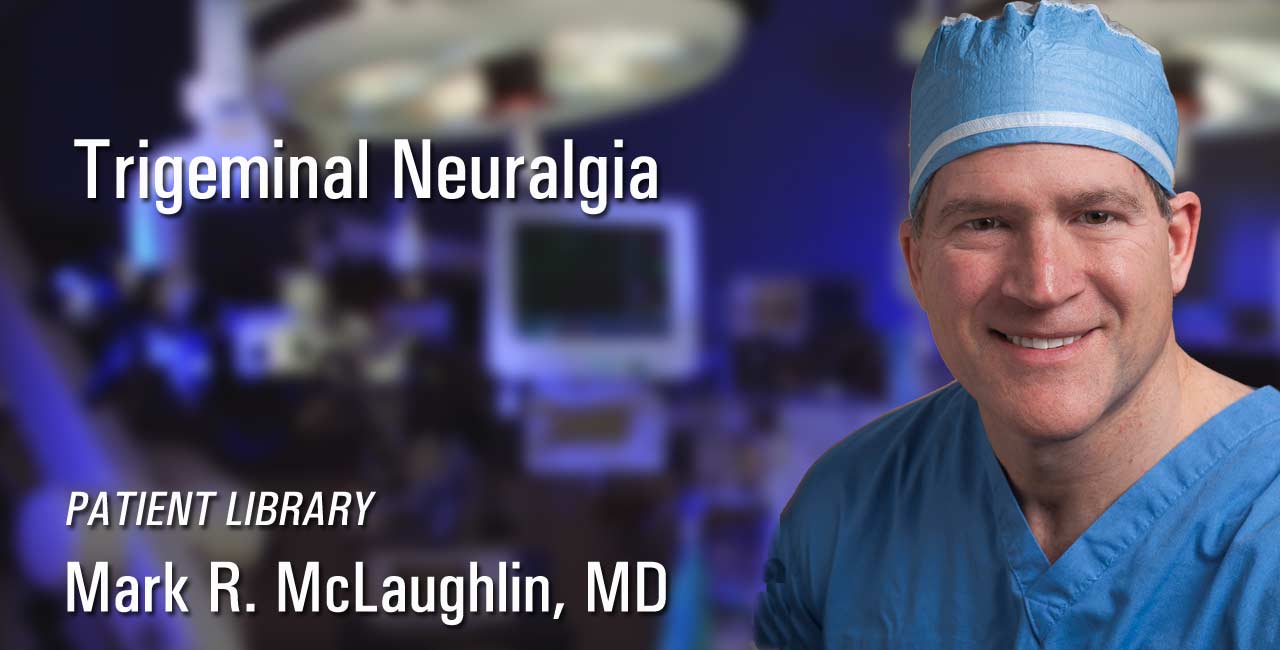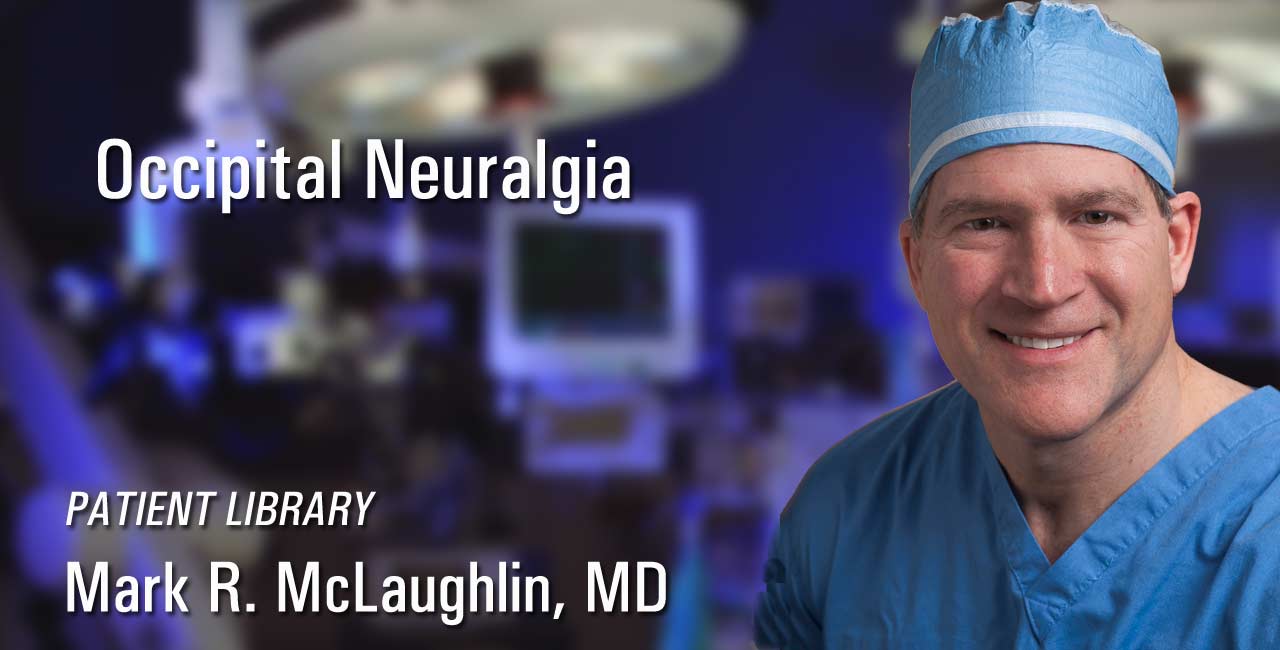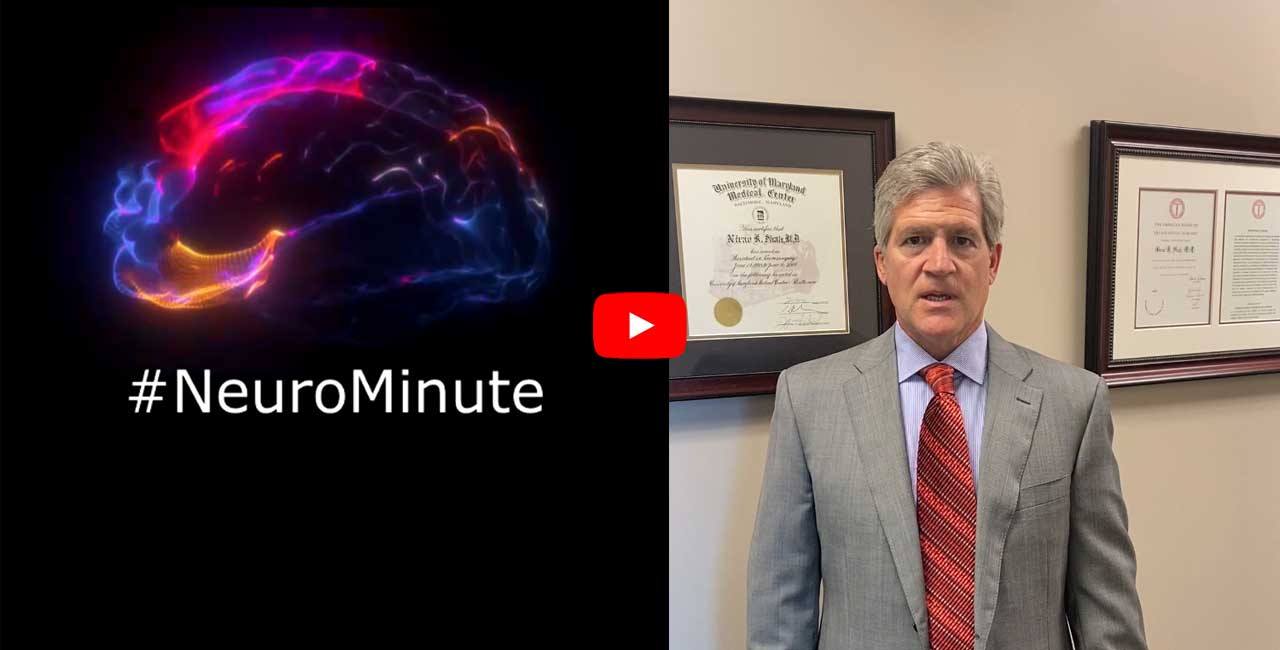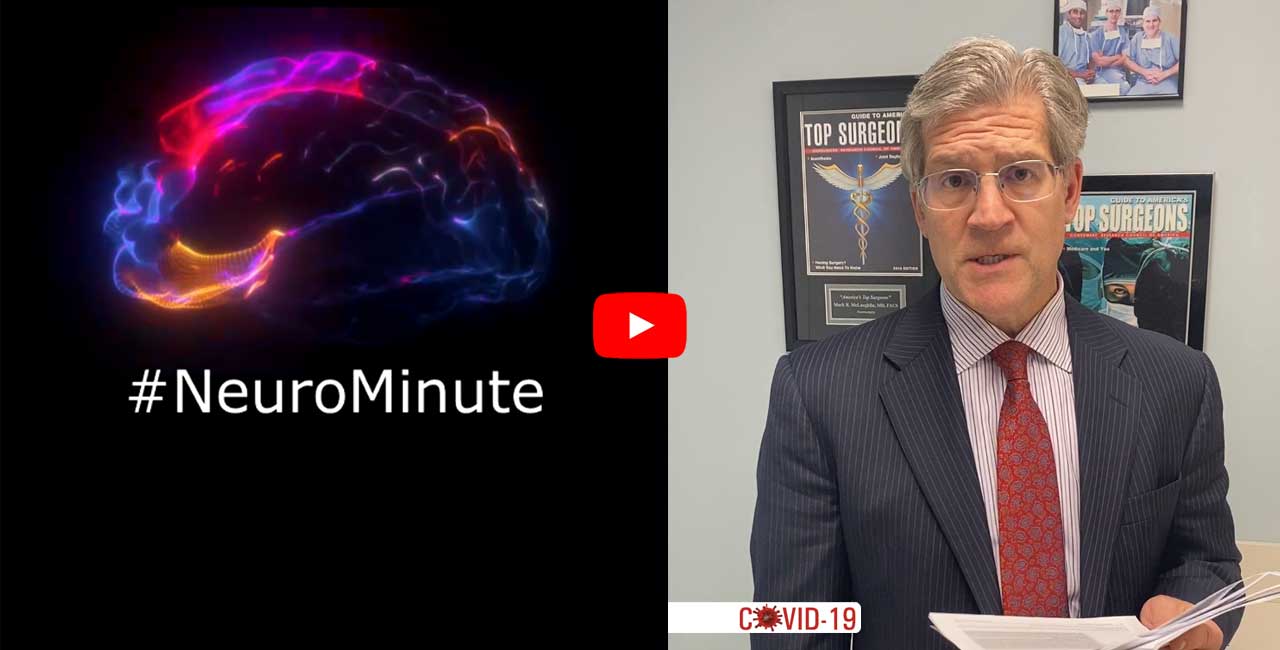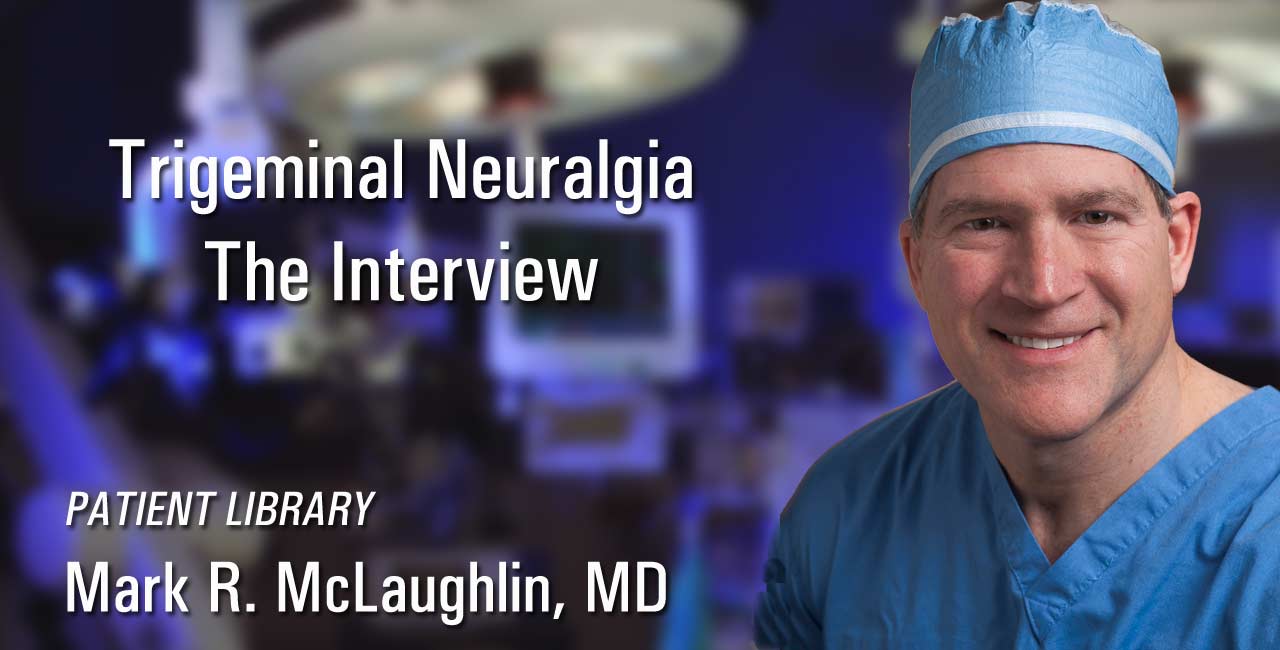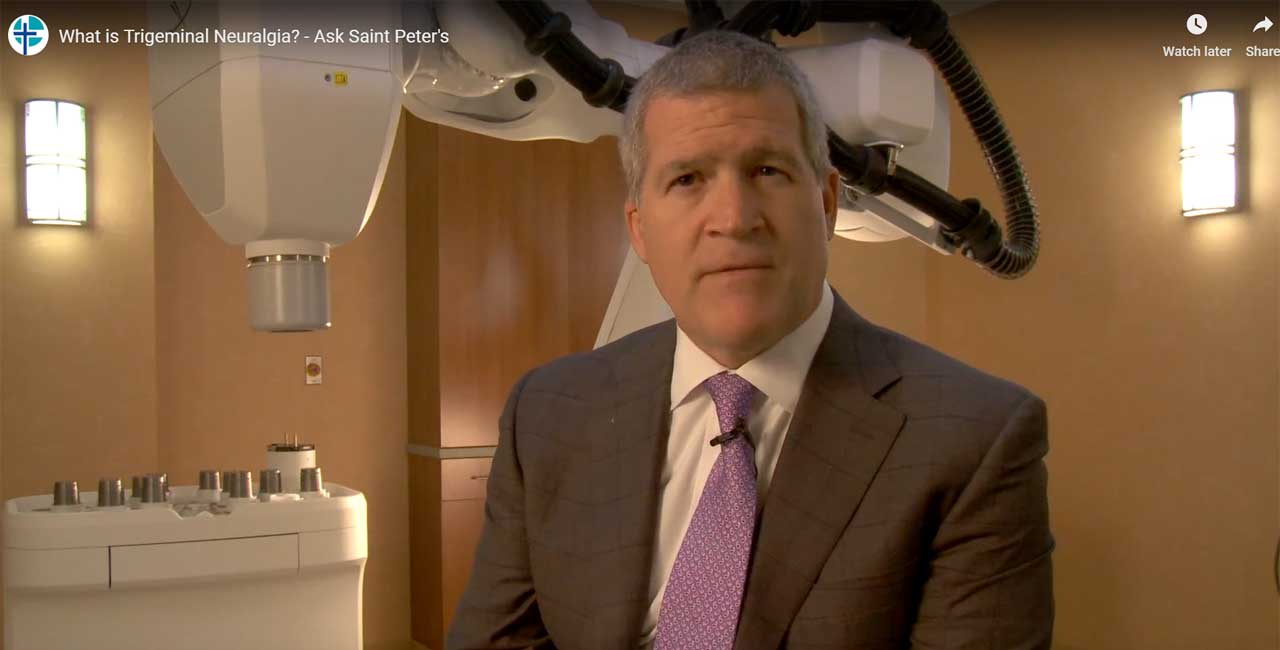Trigeminal Neuralgia | Tic Douloureux

By Mark R. McLaughlin, MD, FACS, FAANS
Trigeminal neuralgia (also called Tic Douloureux) is a chronic pain condition characterized by recurring episodes of extreme, sporadic, sudden burning or electric shock-like face pain. The pain typically involves the lower face and jaw, although sometimes it affects the area around the nose and above the eye. In almost all cases, the pain is felt on one side of the face. Although the pain seldom lasts more than a few seconds or a minute or two per episode, the intensity of pain can be physically and mentally incapacitating. Trigeminal neuralgia is also called tic douloureux.
Trigeminal neuralgia most often affects people over the age of 50, however it can occur at any age. Trigeminal neuralgia is more common in women than in men, although the reason for this is unknown. There is some evidence that the condition may be inherited, possibly due to an inherited pattern of blood vessel formation.
The attacks can be triggered by vibration or contact with the cheek such as occurs during shaving, brushing teeth, eating, drinking, talking, or even as a result of exposure to wind. The attacks often worsen over time, with fewer and shorter pain-free periods between episodes. Some patients experience a tingling or numbing sensation in the days preceding an attack.
Causes of Trigeminal Neuralgia
Trigeminal Neuralgia is caused by irritation of the fifth cranial nerve. The trigeminal nerve is the fifth of 12 pairs of cranial nerves in the head. TN is sometimes broken down into Type 1 (TN1) and Type 2 (TN2). TN type 1 (TN1) is characterized by attacks of intense, stabbing pain that effect the mouth, cheek, nose, and/or other areas on one side of the face. TN type 2 (TN2) is characterized by less intense pain, but a constant dull aching or burning pain. Both types of pain can occur in the same individual, even at the same time.
There is however, no consensus for a classification system for Trigeminal Neuralgia. There is not surprisingly, consensus about the importance of having a treating physician with deep and extensive training the treatment of TN.
The condition may be part of the aging process but in some cases it is the associated with another disorder, such as multiple sclerosis or other disorders characterized by damage to the myelin sheath that covers certain nerves.
Some possible causes for trigeminal neuralgia are:
- Blood vessels pressing down on the trigeminal nerve
- Growths or lesions at the base of the skull
- Tumors
A variety of tests may be performed to identify problems and rule out other causes for the pain. These tests may include Magnetic resonance imaging (MRI), CT Scans, or X-rays. MRI's can detect if a tumor or multiple sclerosis is irritating the trigeminal nerve, however often imaging of the brain will not reveal the precise cause of the pressure.
Although drugs are sometimes effective in treatment, surgery may be required for permanent relief from the pain. Surgery is considered effective for cases that do not benefit from medications.
Symptoms
Patients describe the pain as excruciating. The pain can occur suddenly, and disrupt the ability to think clearly or complete tasks. Female patients have described the pain as far worse than childbirth. Indeed, in the early 20th Century, the disease was sometimes referred to as the "suicide disease".
The pain has been described as:
- Sharp knife slicing
- ice pick jabbing
- being tazed
- sharp stabbing
- blowtorch burning
- hot ice pick stabbing
electrical storm - razor scraping
- knife hammering
- throbbing, piercing, stabbing
Fortunately, modern treatment has allowed surgeons to intervene, and in many cases reduce or remove the pain.
Princeton Brain & Spine neurosurgeon Mark R. McLaughlin, MD, FACS, FAANS trained with Peter Jannetta, M.D., the "father" of modern microvascular decompression surgery for trigeminal neuralgia, hemifacial spasm, glossopharyngeal neuralgia, and other cranial nerve rhizopathies. Dr. McLaughlin worked closely with Dr. Jannetta in the ongoing research, and was the lead author of the paper
He was also co-author with Drs Jannetta and Casey of "Technique of Microvascular Decompression: A Technical Note"
Other resources include:
Trigeminal Neuralgia Factsheet at NIH
Trigeminal Neuralgia Overview at American Association of Neurological Surgeons
Rare Disease Database at National Organization for Rare Disorders
Neuralgia Information for Patients - Expert Princeton Neurosurgeon
Surgery for Occipital Neuralgia
Surgical treatment for occipital neuralgia is sometimes required. In this video, Dr. McLaughlin explains the key points that will be considered before surgery is recommended.
What is Occipital Neuralgia?
Occipital neuralgia is a distinct type of headache characterized by piercing, throbbing, or electric-shock-like chronic pain in the upper neck, back of the head, and behind the ears, usually on one side of the head.
Trigeminal Neuralgia | Tic Douloureux
Trigeminal neuralgia (also called Tic Douloureux) is a chronic pain condition characterized by recurring episodes of extreme, sporadic, sudden burning or electric shock-like face pain.
Glossopharyngeal Neuralgia
Glossopharyngeal neuralgia is a condition characterized by recurring episodes of severe pain in the tongue, throat, ear, and area near the tonsils. An overview from Dr. McLaughlin.
Occipital Neuralgia
Occipital Neuralgia (ON) is a common disease that is often often misunderstood or not diagnosed by many physicians. Princeton New Jersey neurosurgeon Mark R. McLaughlin, MD explains.
Trigeminal Neuralgia in a Time of COVID-19
Video: Stress may result in increased perception of facial pain from Trigeminal Neuralgia. Dr. McLaughlin offers some thoughts on dealing with TN during the coronavirus crisis. April 2020
Trigeminal Neuralgia: COVID19 - Video Update
September 2021: Video update with Mark R. McLaughlin, MD. What you need to know about COVID19 and Trigeminal Neuralgia.
Trigeminal Neuralgia with COVID-19 Virus
Video January 2022 : Dr. McLaughlin highlights the current literature as it relates to Trigeminal Neuralgia and the Covid Virus. What have we learned?
Trigeminal Neuralgia : Covid-19 Vaccination
A January 2022 review of medical literature related to COVID-19 vaccination, Trigeminal Neuralgia, and Neurological Complications. What does the medical literature tell us?
WGN TV Video About Trigeminal Neuralgia
The wife of WGN Sports Anchor Pat Tomasulo suffers from Trigeminal Neuralgia. An informative video.
Trigeminal Neuralgia : The Interview
Dr. McLaughlin was interviewed about Trigeminal Neuralgia and his experience as a top Neuralgia specialist in New Jersey.
Saint Peter's Healthcare Video: Trigeminal Neuralgia
One of my great passions is the treatment of Trigeminal Neuralgia. It is a traumatizing and painful condition. This video was prepared for Saint Peters Healthcare. In it, I answer some common questions about TN.
Trigeminal Neuralgia Treatment at CentraState
“When I think back on what I lived with for so many years, I kind of feel sorry for myself,” Elizabeth says. “I wish I had had the surgery years ago.”


